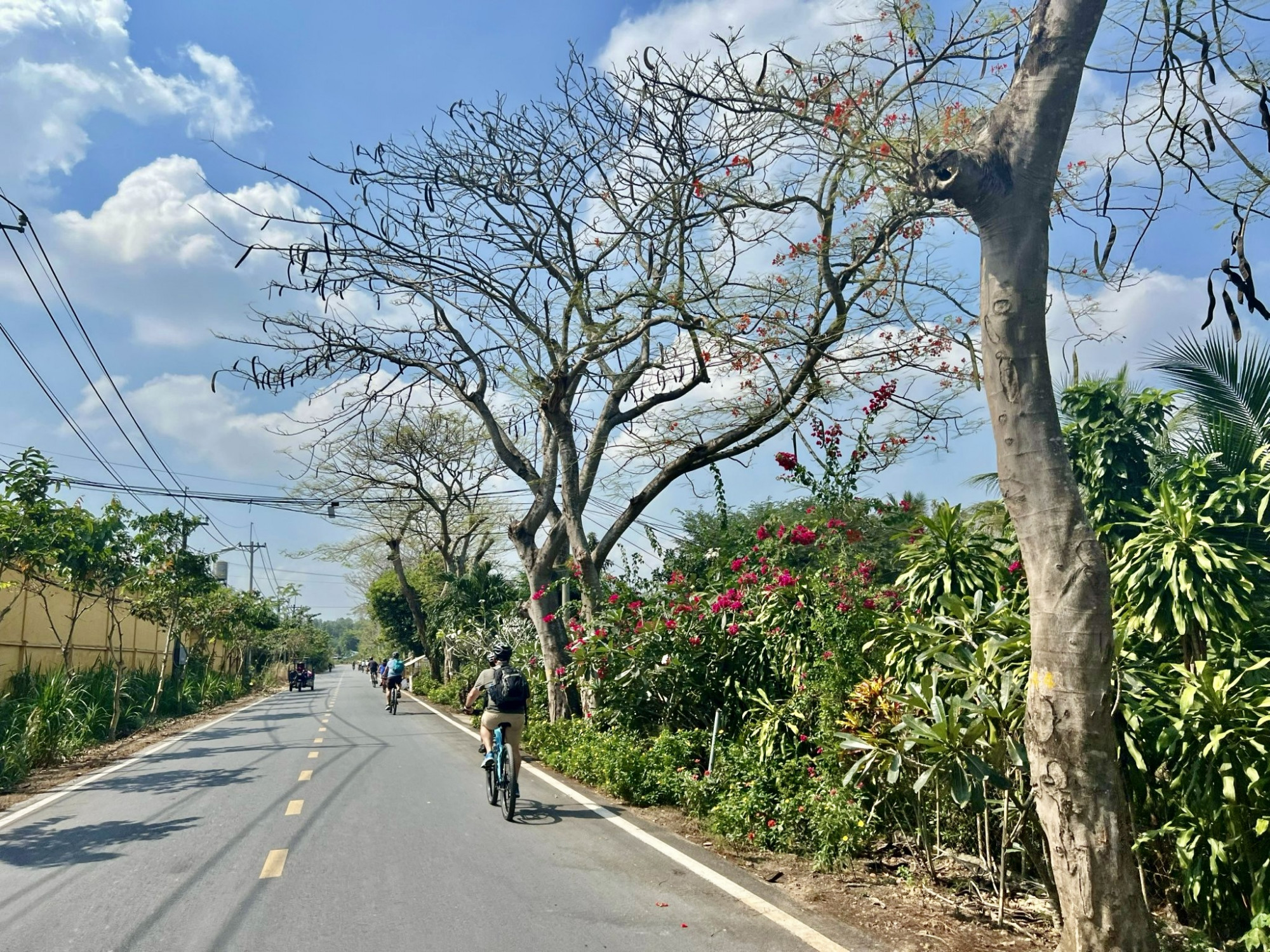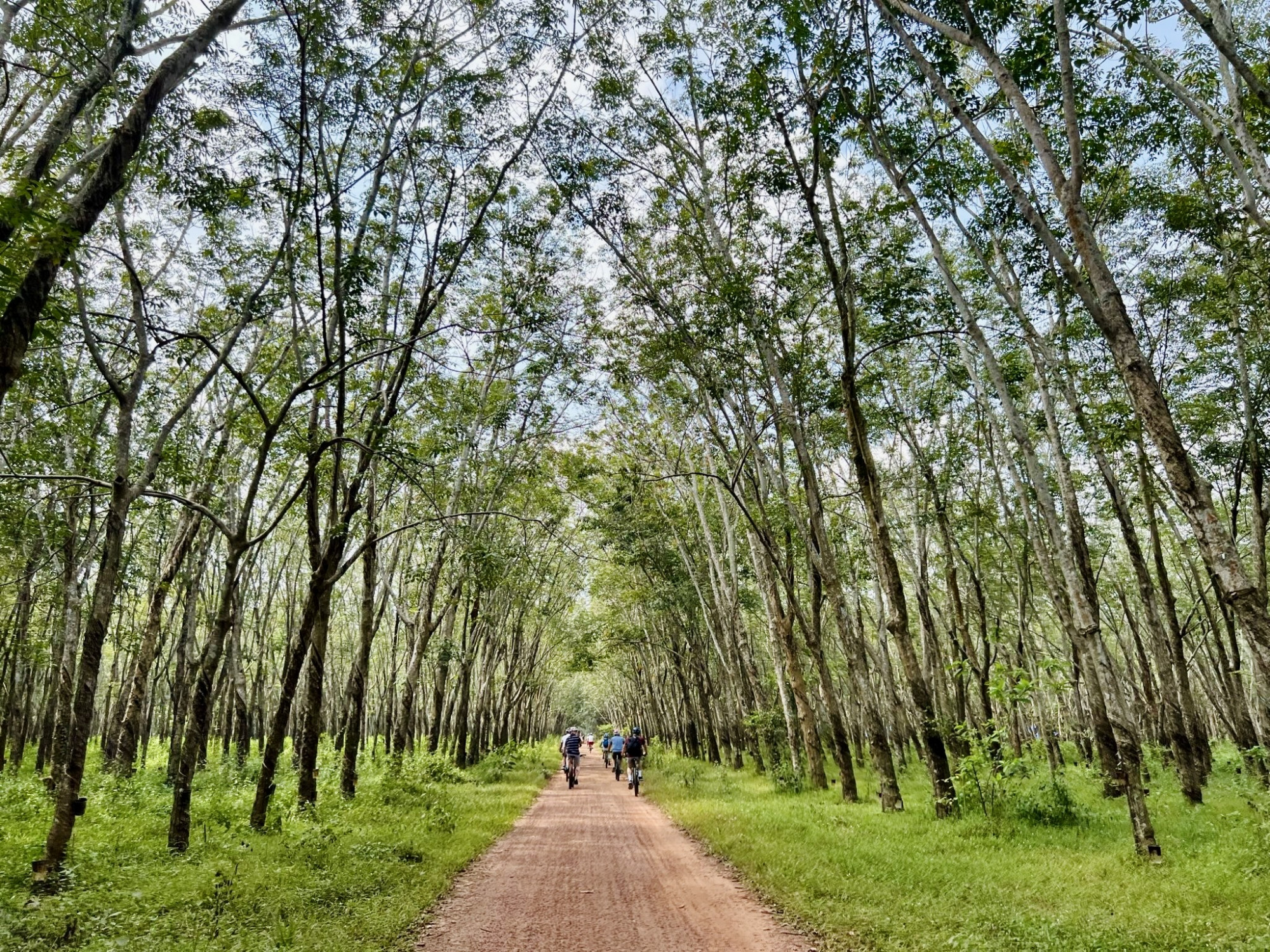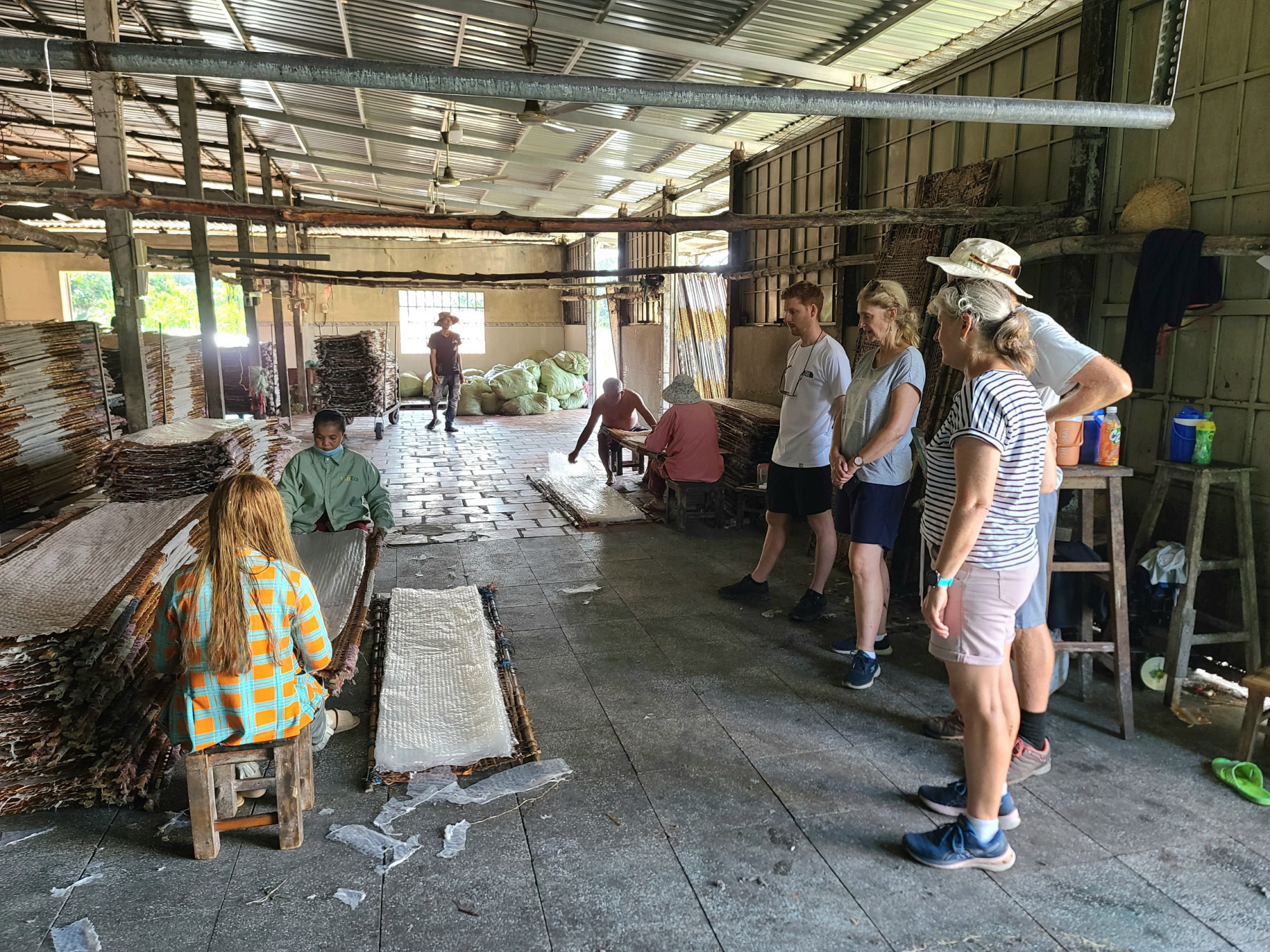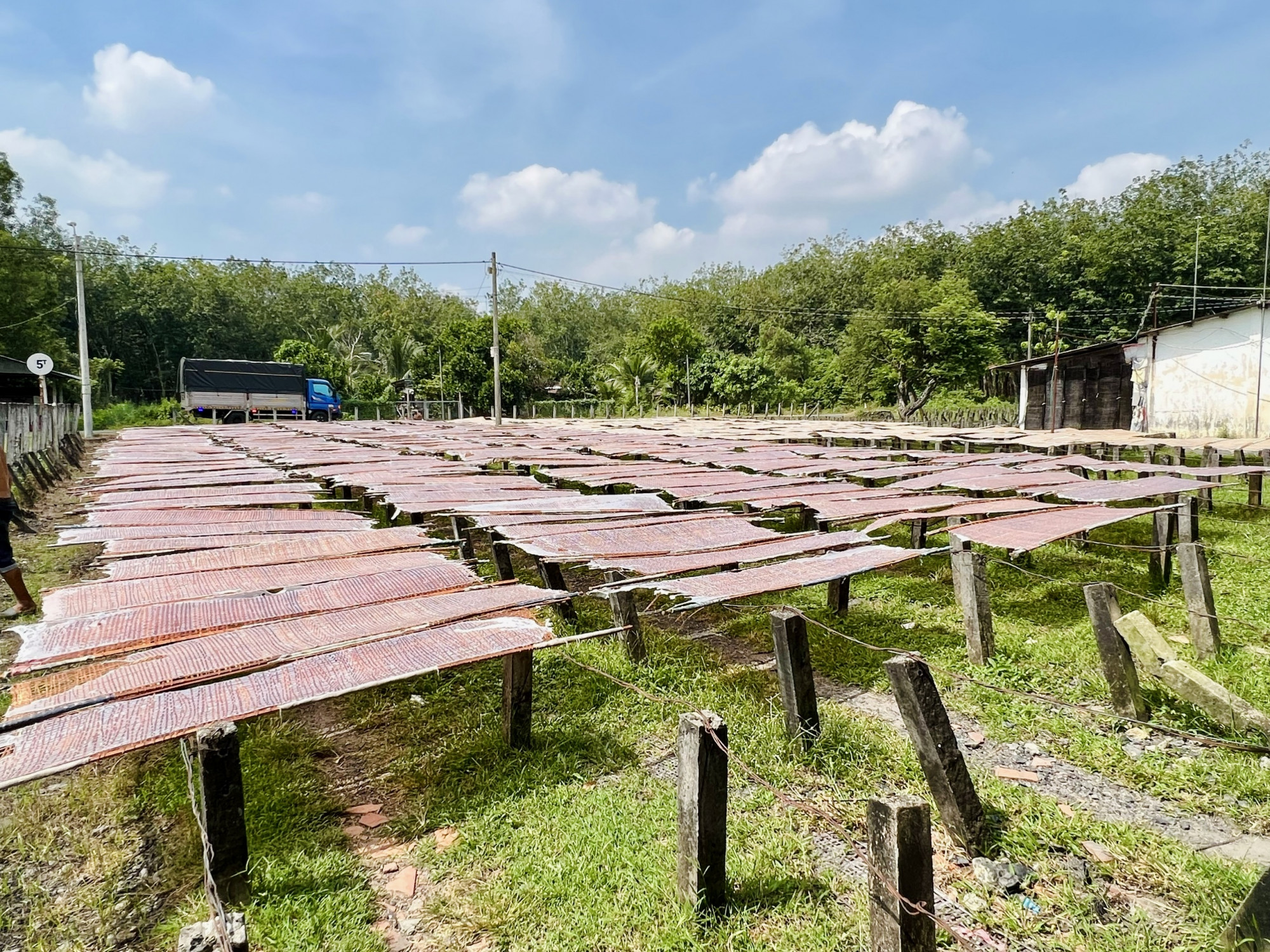Introduction
Củ Chi, located just 40 kilometers northwest of Ho Chi Minh City, is a region steeped in history, culture, and natural beauty. It’s best known for the famous Củ Chi Tunnels, a symbol of Vietnam’s resilience during the war. Beyond the tunnels, Củ Chi offers visitors a glimpse into the region’s agricultural heritage with its expansive rubber plantations and the delicate artistry of rice paper crafting. This guide will take you through these fascinating aspects of Củ Chi, with tips on how to explore the area by bicycle for an immersive and active experience.

The Củ Chi Tunnels: A Historical Relic of Vietnam’s Fight for Independence
The Củ Chi Tunnels are a historical marvel that offer insight into the ingenuity, determination, and resilience of the Vietnamese people during times of conflict. Originally constructed in the late 1940s during the First Indochina War against French colonial forces, these tunnels were later expanded and became an essential part of the Viet Cong’s strategy during the Vietnam War.
Stretching over 250 kilometers, the tunnels served as hiding spots, communication routes, supply lines, and living quarters. They played a critical role in the guerrilla warfare tactics that allowed the Viet Cong to engage in surprise attacks and then disappear underground. Today, visitors can explore a portion of this historic network, preserved and modified for safety. The tunnels offer a glimpse into the hardships endured by the soldiers who lived within them.
Cycling Tip:
Start your cycling tour early in the morning to avoid the heat. The Củ Chi Tunnels are best explored at a leisurely pace, allowing you to fully appreciate the historical significance of this site. Bikes can be parked near the entrance, where you can continue your journey on foot.
The Rubber Plantations: Witnessing a Century-Old Agricultural Tradition

Củ Chi’s rubber plantations are another highlight, offering a peaceful and scenic ride through neat rows of towering rubber trees. Established during French colonial rule, these plantations have been a cornerstone of the region’s economy for over a century. The sight of orderly rows of rubber trees, with their tall, straight trunks and wide canopies, creates a serene atmosphere, providing a perfect contrast to the war history of the tunnels.
The process of rubber extraction, known as tapping, is a delicate and skilled practice. Farmers make precise incisions into the bark to collect latex, which is then “cooked” in large vats to produce solid rubber. This process involves heating the latex, causing it to coagulate and form a durable material used in various products.
The Rice Paper Craft Village: Discovering Củ Chi’s Artisanal Traditions


After exploring the historical and natural sites, head to the rice paper craft village to discover Củ Chi’s artisanal traditions. The village is a short ride away from the tunnels and plantations, making it an ideal final stop on your cycling tour.
In the village, you can watch the entire process of rice paper production, from soaking the rice to grinding it into a paste and spreading it thinly over bamboo frames to dry. The skill and precision required to produce perfect, paper-thin sheets are impressive, and many workshops allow visitors to try their hand at the craft. This village is also a great place to purchase fresh rice paper to take home.
Cycling Tip:
As you cycle through the village, make sure to stop at one of the local workshops. The villagers are often welcoming and eager to share their craft with visitors. It’s also a great opportunity to rest and refuel with some fresh rice paper rolls before continuing your journey.
Practical Tips for a Cycling Tour in Củ Chi
Best Time to Visit: The cooler months from November to February are ideal for cycling tours in Củ Chi. The weather is mild, and you’ll avoid the intense heat of the summer months.
Renting a Bike: If you don’t have your own bike, rentals are available in Ho Chi Minh City. Choose a sturdy mountain bike or hybrid bike for comfort on different terrains.
What to Bring: Carry plenty of water, sunscreen, a hat, and insect repellent. Wearing comfortable clothing and a helmet is essential for a safe and enjoyable ride.
Guided Tours: For a more informative experience, consider joining a guided cycling tour. Guides often provide valuable insights into the history and culture of Củ Chi.
Route Planning: Plan your route to include the main attractions—Củ Chi Tunnels, rubber plantations, and the rice paper village. A round trip from the tunnels to the village and back is approximately 25-30 kilometers, making for a manageable day trip.
Conclusion
Củ Chi offers a unique blend of history, nature, and craftsmanship that makes it a must-visit destination for anyone traveling to southern Vietnam. Exploring this region by bike allows you to fully immerse yourself in its rich cultural heritage. Whether you’re delving into the harrowing history of the Củ Chi Tunnels, cycling through tranquil rubber plantations, or learning the delicate art of rice paper making, each experience in Củ Chi will leave you with a deeper understanding and appreciation of Vietnam’s past and present.
Join our Cu Chi Tunnels tour for a historic bike ride!
